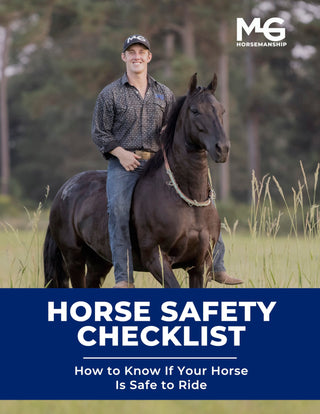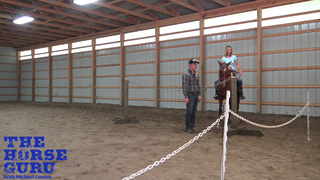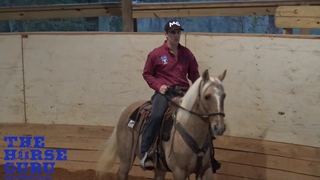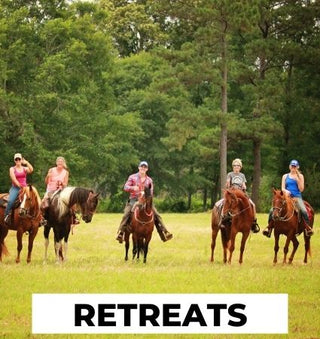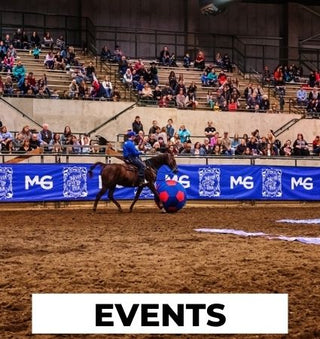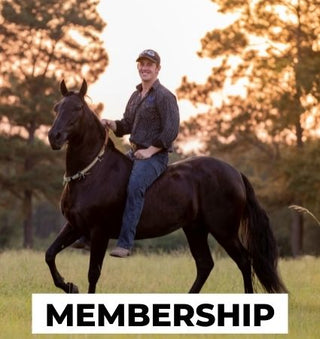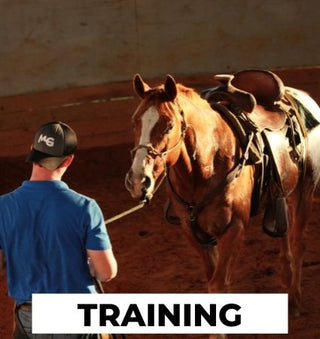Watch the Video Here or continue reading below!
At the 2019 World Horse Expo, renowned horse trainer Michael Gascon delivered an unfiltered, practical clinic on one of the most critical — and most misunderstood — topics in horsemanship: communication. In this high-energy session titled Crystal Clear Communication, Gascon guided the crowd through a blend of philosophy, humor, and technical application, all while working with a problem mare who had once flipped over on her rider.
So what does it really mean to "communicate clearly" with a horse?
1. Control the Head, Control the Horse
Gascon starts with a fundamental truth: if you can control a horse’s head, you can influence the rest of its body. “Their head is the only part of their body they don't use to push or kick you,” he explains. “If you can control that, you can move the rest.”
He emphasizes that real control doesn’t come from brute force or constant pressure — it comes from the horse wanting to respond. If a cue isn’t working, repeating it more aggressively only desensitizes the horse. “If you kick a horse twice and nothing happens, stop kicking,” he warns. “You’re just making it harder for the next person.”
2. The Problem Isn’t the Buck, It’s the Lack of Control
Whether it's barn sourness, bucking, or bolting, Gascon points out that these aren’t the real problems — they’re symptoms. The core issue is a lack of control: over the head, the shoulders, and the hips. If a horse flips over, bucks, or bolts, it's often because the rider never had the horse’s attention or body under control to begin with.
“If your horse rears, that means you pulled one way, the horse pulled another, and nobody gave. But the horse got the release,” he explains. “And horses learn from the release.”
3. Don’t Fight in a Straight Line
Horses are strong in a straight line — it’s where their power lies. That’s why Gascon prefers to work crooked: flexing, bending, spiraling. “I’ll never argue with a horse straight. If I back her crooked, she loses half her power,” he says. “If she can’t pull her head from me, she can’t flip over on me.”
Gascon demonstrates a spiral technique, ideal for hot gaited horses and runaway Thoroughbreds. By circling tighter and tighter, flexing the horse to the inside with one rein, he teaches the horse to slow down, soften, and focus.
4. When Resistance Fails, Expect a Tantrum
One of the clinic's most memorable moments came when the horse, frustrated that her usual defenses (bucking, pulling, resistance) weren’t working, simply laid down.
“She flopped like a little poodle,” Gascon laughs. “Just laid herself out and tried to check out.” But instead of reacting emotionally, Gascon treated it like a toddler’s tantrum in Walmart. “Get up. Let’s go. You don’t get the candy.”
5. The Walmart Mom Metaphor
In perhaps the most relatable analogy of the clinic, Gascon compares horsemanship styles to two kinds of moms in a Mississippi Walmart:
-
Mom #1 yells, threatens, counts to three — and her kid does whatever he wants.
-
Mom #2 whispers — and her child knows she means business.
“A good horseman is bipolar,” he jokes. “Kind and calm when things are good, but serious when it counts.” Horses need consistent leadership, not volume. “Walk quietly, but carry a big stick.”
6. Bootcamp Comes Before the Trail Ride
For all the talk of softness and subtlety, Gascon is crystal clear: you have to set the tone early. The first day or two with a new horse is “bootcamp” — not for punishment, but to establish who’s in charge. Once the horse understands that everything you ask will happen, the rest is easy.
“I’m lazy,” he says with a grin. “I only want to work hard one or two days. The rest is cruise control.”
7. Don’t Let Preconceived Limits Hold You Back
Throughout the session, Gascon rails against stereotypes — about horse breeds, rider abilities, and what a horse “can’t” do.
“Arabians? Too hot. Warmbloods? Dumb. Gaited horses? Can’t stop.” He’s heard it all. But more often than not, the problem isn’t the horse — it’s how they’ve been conditioned and handled.
“The biggest limit on a horse is us,” he says. “Stop telling them what they can’t do and start showing them what they can.”
Final Thoughts
Michael Gascon’s Crystal Clear Communication clinic isn’t about quick fixes — it’s about mindset. It’s about setting boundaries, rewarding try, and never releasing at the wrong time. Whether you’re dealing with a rearing mare, a bolting gelding, or just trying to refine your timing, the message is the same:



